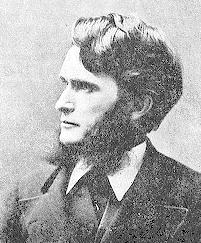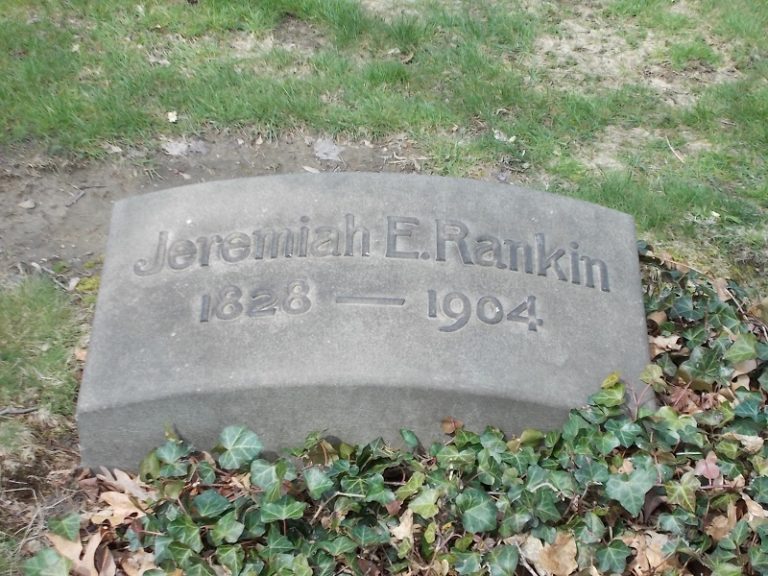Hymn History: God Be with You ‘Till We Meet Again & Author: Jeremiah Eames Rankin
“That gifted hymn-writer, Jeremiah Eames Rankin, tells us that the two most useful farewell hymns in the world are Blest Be the Tie That Binds and God Be With You ’Til We Meet Again.”
(W. H. Bergherm)
The Origin of the Hymn “God Be with You ‘Till We Meet Again”
Among the most beloved benediction hymns of the Christian faith, “God Be with You ‘Till We Meet Again” holds a special place in the hearts of worshipers across generations. It has been sung at church farewells, funerals, and missionary send-offs; it has closed countless worship services and comforted believers parting from one another in faith and hope. Written in the late nineteenth century by Jeremiah Eames Rankin, with music by William Gould Tomer, this hymn beautifully expresses the Christian assurance of God’s continual presence and the hope of reunion—whether in this life or in the life to come.
The Author: Jeremiah Eames Rankin
Jeremiah Eames Rankin (1828–1904) was a respected Congregational minister, scholar, and hymn writer. Born in Thornton, New Hampshire, Rankin graduated from Middlebury College in Vermont in 1848 and later studied theology at Andover Seminary. Over the course of his ministry, he served several churches in New England and Washington, D.C., where his preaching was known for both eloquence and sincerity.
Rankin was also a man of deep compassion and broad Christian vision. He was active in the temperance movement and a strong advocate for the abolition of slavery. His pastoral work often reflected his concern for unity among believers and kindness toward others—qualities that would later shape the tone and purpose of his most enduring hymn.
In 1873, while serving as pastor of the First Congregational Church in Washington, D.C., Rankin sought a way to provide his congregation with a simple and sincere benediction song. Sunday after Sunday, he would close the service by saying, “God be with you,” but he desired a hymn that could give musical expression to that same heartfelt blessing. As he later explained, the phrase “God be with you” had long been used as a parting salutation among Christians, and it naturally evolved into the expression “Goodbye,” which is a contraction of “God be with ye.” Inspired by this thought, Rankin began to write.
Writing the Hymn
The hymn took shape in 1880. Rankin later recalled that the first stanza came to him almost spontaneously as he meditated on the parting words of Christian fellowship. The text begins:
God be with you till we meet again;
By His counsels guide, uphold you,
With His sheep securely fold you;
God be with you till we meet again.
The simplicity of the language is matched by its spiritual depth. Rankin’s choice of words reflects his pastoral heart—he does not merely wish his congregation farewell, but entrusts them to the continuing care and guidance of God Himself. The repeated refrain, “Till we meet, till we meet,” emphasizes both the tenderness of human separation and the certainty of Christian reunion.
Rankin sent the lyrics to several composers, seeking a suitable tune. Among those who received it was William G. Tomer (1833–1896), a New Jersey musician and Civil War veteran who had served as a bugler in the Union Army. Tomer was then serving as choir director and clerk at Grace Methodist Episcopal Church in New Jersey. When he read Rankin’s text, he was deeply moved and soon composed the melody that perfectly matched its tone of calm assurance and farewell blessing.
Publication and Reception
The hymn was first published in 1882 in the Gospel Bells hymnal, edited by Jeremiah Rankin himself. It was quickly adopted by churches across denominations, especially among Methodists, Congregationalists, and Baptists. Its use spread widely through Sunday schools, revival meetings, and missionary gatherings.
The combination of Rankin’s comforting text and Tomer’s gentle yet memorable melody gave the hymn a natural appeal. It was often sung at the close of services, when pastors or missionaries were leaving a congregation, or when members of the church were moving to distant places. For many, it became not just a hymn but a ritual expression of Christian love and farewell.
Over time, “God Be with You ‘Till We Meet Again” appeared in countless hymnals and was translated into many languages. Its use in both Protestant and Catholic contexts shows the universality of its message. The hymn’s refrain—“Till we meet at Jesus’ feet”—reminds believers that even when earthly partings are painful, there remains a promise of eternal reunion in Christ.
The Meaning and Enduring Appeal
Part of what gives “God Be with You ‘Till We Meet Again” its enduring strength is its combination of warmth and faith. It speaks to one of the most common human experiences—saying goodbye—yet it lifts that experience from mere sentiment to spiritual confidence.
Rankin’s hymn teaches that separation is never final for those who belong to Christ. Whether the parting is temporary, as between friends or family members, or permanent in this life, as in death, believers are united in the keeping power of God and the hope of heaven.
The refrain’s repeated assurance—“God be with you till we meet again”—echoes like a pastoral benediction over the years, offering comfort at funerals, missionary farewells, and every kind of leave-taking. It has been sung around campfires, at weddings, in hospital rooms, and on distant mission fields—wherever Christians have needed to say goodbye with faith rather than despair.
Legacy
Jeremiah Eames Rankin went on to serve as president of Howard University, a historically Black university in Washington, D.C., where he was admired for his dedication to education and racial harmony. Yet his greatest legacy remains in this simple benediction hymn that continues to circle the globe.
Even today, more than a century after its writing, “God Be with You ‘Till We Meet Again” remains a cherished conclusion to Christian gatherings. Its quiet melody and heartfelt words continue to remind believers of the enduring presence of God and the blessed hope of reunion—whether across miles or across eternity.
Indeed, Rankin’s wish for his congregation has become a universal Christian farewell: God be with you, till we meet again.
Related
Sorry, no records were found. Please adjust your search criteria and try again.
Sorry, unable to load the Maps API.

